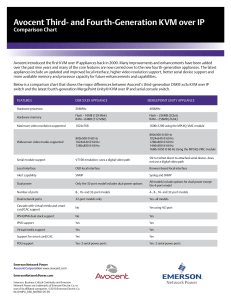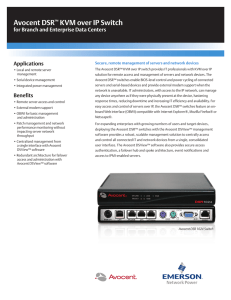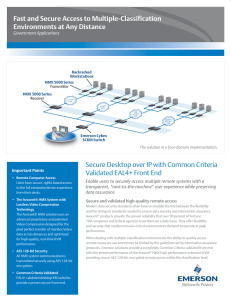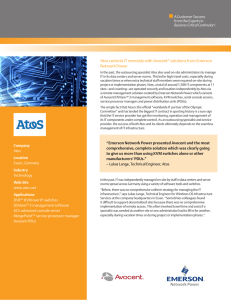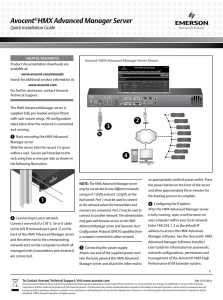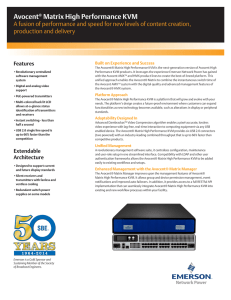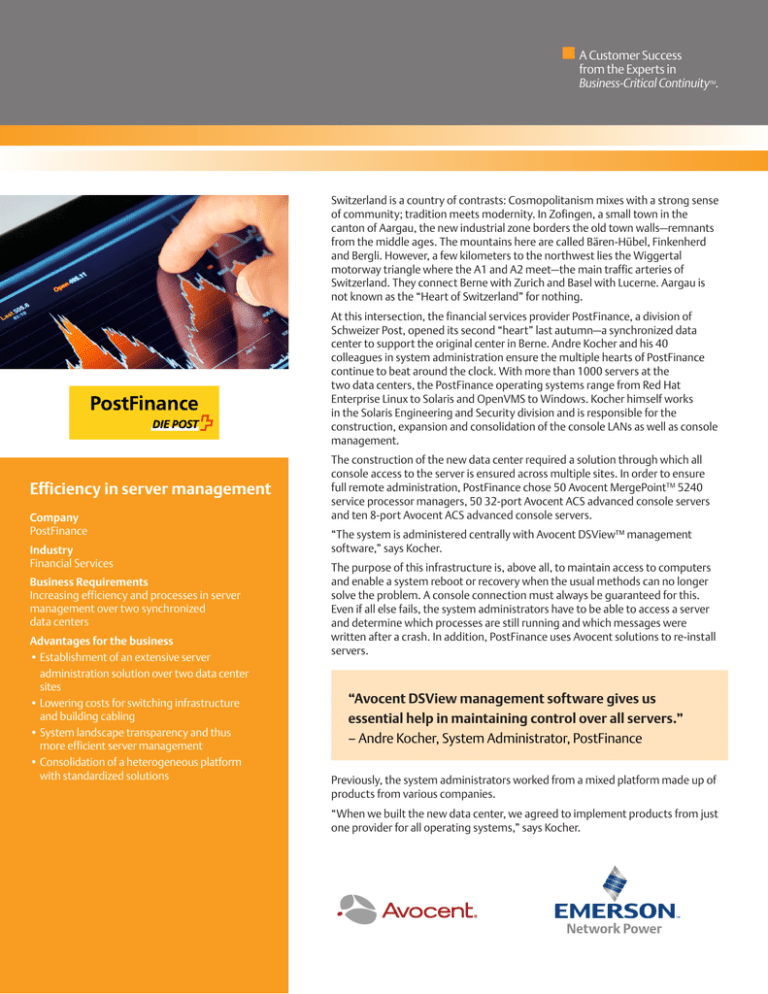
A Customer Success
from the Experts in
Business-Critical ContinuityTM.
Switzerland is a country of contrasts: Cosmopolitanism mixes with a strong sense
of community; tradition meets modernity. In Zofingen, a small town in the
canton of Aargau, the new industrial zone borders the old town walls—remnants
from the middle ages. The mountains here are called Bären-Hübel, Finkenherd
and Bergli. However, a few kilometers to the northwest lies the Wiggertal
motorway triangle where the A1 and A2 meet—the main traffic arteries of
Switzerland. They connect Berne with Zurich and Basel with Lucerne. Aargau is
not known as the “Heart of Switzerland” for nothing.
At this intersection, the financial services provider PostFinance, a division of
Schweizer Post, opened its second “heart” last autumn—a synchronized data
center to support the original center in Berne. Andre Kocher and his 40
colleagues in system administration ensure the multiple hearts of PostFinance
continue to beat around the clock. With more than 1000 servers at the
two data centers, the PostFinance operating systems range from Red Hat
Enterprise Linux to Solaris and OpenVMS to Windows. Kocher himself works
in the Solaris Engineering and Security division and is responsible for the
construction, expansion and consolidation of the console LANs as well as console
management.
Efficiency in server management
Company
PostFinance
Industry
Financial Services
Business Requirements
Increasing efficiency and processes in server
management over two synchronized
data centers
Advantages for the business
• Establishment of an extensive server
administration solution over two data center
sites
• Lowering costs for switching infrastructure
and building cabling
• System landscape transparency and thus
more efficient server management
• Consolidation of a heterogeneous platform
with standardized solutions
The construction of the new data center required a solution through which all
console access to the server is ensured across multiple sites. In order to ensure
full remote administration, PostFinance chose 50 Avocent MergePointTM 5240
service processor managers, 50 32-port Avocent ACS advanced console servers
and ten 8-port Avocent ACS advanced console servers.
“The system is administered centrally with Avocent DSView™ management
software,” says Kocher.
The purpose of this infrastructure is, above all, to maintain access to computers
and enable a system reboot or recovery when the usual methods can no longer
solve the problem. A console connection must always be guaranteed for this.
Even if all else fails, the system administrators have to be able to access a server
and determine which processes are still running and which messages were
written after a crash. In addition, PostFinance uses Avocent solutions to re-install
servers.
“Avocent DSView management software gives us
essential help in maintaining control over all servers.”
– Andre Kocher, System Administrator, PostFinance
Previously, the system administrators worked from a mixed platform made up of
products from various companies.
“When we built the new data center, we agreed to implement products from just
one provider for all operating systems,” says Kocher.
A Customer Success
from the Experts in
Business-Critical ContinuityTM.
This principle was “implemented consistently” at the new Zofingen
site and then applied at the old site in Berne as well. By implementing
Avocent® solutions, the IT experts can now access all servers and
services they need across data centers. For backup and system
stability, console managers reside in both the old and new data
centers, where they act as master and slave units, synchronizing with
each other.
“With the old solution, the IP consoles were connected via normal
switching infrastructure,” explains Kocher.
The upshot was each port connected to the switch also had to be
paid for. The serial consoles, in contrast, were connected via the
universal building cabling, which also involved costs. With the
Avocent solutions, direct cables now go directly from the Avocent
MergePoint™ service processor managers and Avocent ACS advanced
console servers to the systems.
“We are now saving on costs for switching infrastructure and building
cabling,” says the system administrator. Through consolidation, it
was possible to remove approximately 250 ports and PostFinance’s
bills fell accordingly.
“It is certainly cost-effective. Because we used Solaris, we also
used systems from CycladesTM, and we were impressed by their
performance,” recalls Kocher. Cyclades was acquired by was
acquired by Emerson Network Power’s Avocent business in early
2006. “Since we were already using the products, we knew what
they could do,” he adds.
The challenge with the introduction of the new Avocent solution was
to keep operations running during the installation.
“A critical issue has been the question of how the existing solution
can be replaced without the system administrators noticing and
services being interrupted,” recalls Kocher.
During migration, all consoles in the IP area had to be redirected–onsite and manually. Only after this reconfiguration could the devices be
connected to the new environment.
“The coordination requirements, especially regarding the IP consoles,
were very demanding,” says the IT specialist.
In contrast to the Avocent MergePoint appliance environment,
the reconfiguration of the serial consoles did not present a
challenge: unplug cable, plug cable back in. The entire planning
and organization was coordinated by the system room managers at
PostFinance.
“We went through the system room and looked at the cables on each
server,” remembers Kocher.
The server connection information was entered onto an Excel
spreadsheet, which was then used to plan the migration. The
preparation lasted nearly eight weeks, subsequently the data
center in Berne was migrated room by room within two weeks.
The construction of the second data center in Zofingen had already
started in the countryside.
“The cost of the standardization to Avocent systems and the
documentation has paid off in many respects,” reports Kocher.
“We now know where each server is and we can access a
management application that comprehensively supports us with
administration,” says Kocher.
Through the added transparency, the financial service provider’s
systems are in a position to clean up their waste. Acceptance of the
new solutions from Emerson Network Power’s Avocent business has
also risen.
“This is above all down to the fact that the software has improved,”
says Kocher. The reduced Java speed was initially unexpected by the
system administrators. “Avocent has improved in this area however,
so acceptance has risen,” says Kocher.
The server installation process is much more efficient than before.
Ultimately, there are only two connections: serial and IP. Workers
involved with installations in the data center now have a better
overview of the landscape, so that, according to Kocher, “Issuing
console connections has become much simpler.” He estimates the
number of new connections, mutations and relocations at around
200 servers per year. This is where an increase in efficiency pays off.
What the system administrator likes best is the Avocent DSView
management software: “Avocent DSView™ management software
gives us essential help in maintaining control over all servers,” says
Kocher. ”
After the “rather stressful time,” the period of relative calm was used
to look at new challenges.
“We are looking into whether and how we will replace our power
switches in the Linux area and include them in the Avocent solution,”
says Kocher.
But in the end, no stone should be left unturned to ensure that the
two hearts of PostFinance beat regularly and efficiently.
What was critical for the successful implementation was an unloved
child in IT: documentation.
Emerson, Business-Critical Continuity and Emerson Network Power are trademarks of Emerson Electric Co. or one of its affiliated companies. Avocent, the Avocent logo, Cyclades,
DSView and MergePoint are registered trademarks of Avocent Corporation. All third party marks are the property of their respective owners. ©2012 Emerson Electric Co. All rights
reserved.
1012-PF-CS-EN

